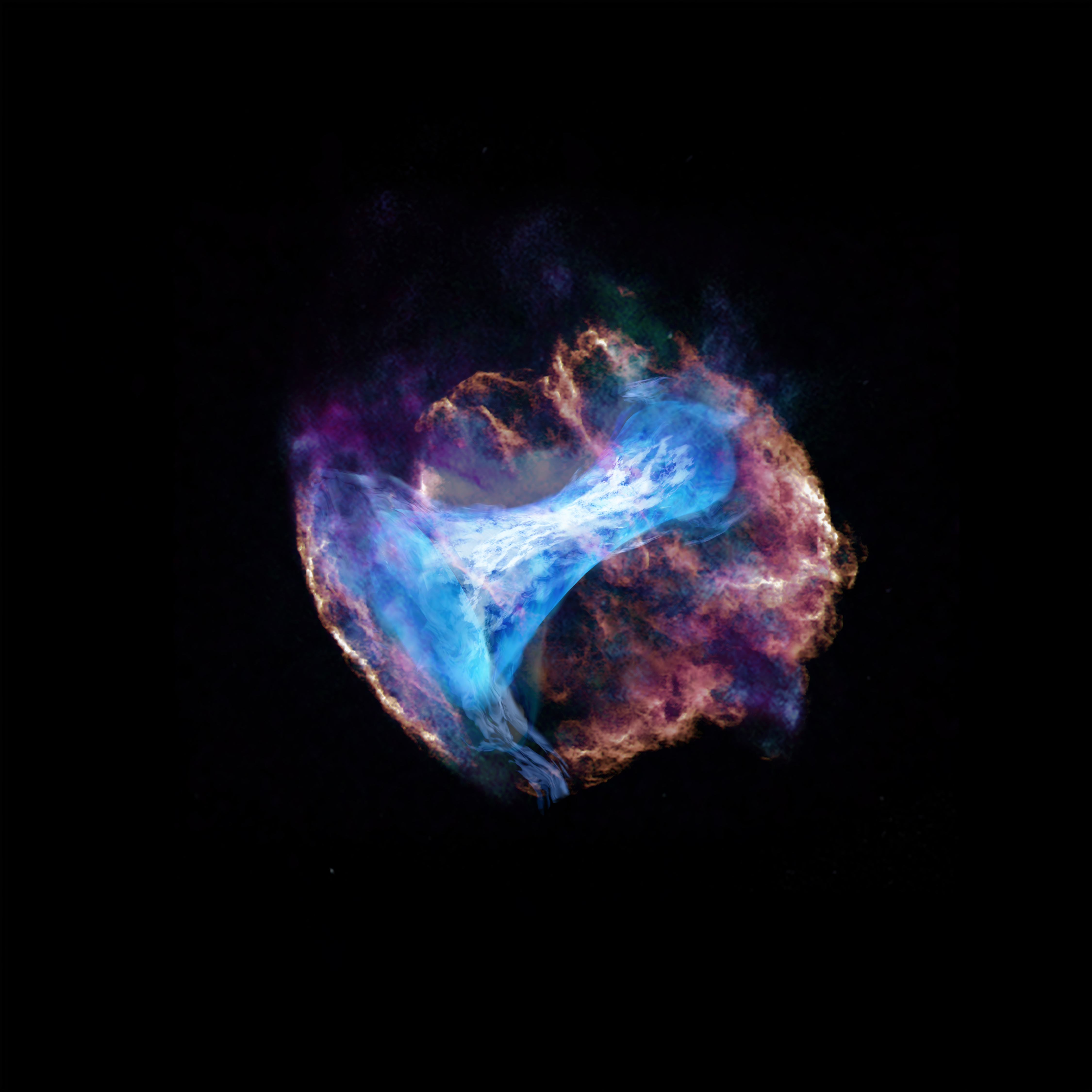An international collaboration team using the X-Ray Imaging and Spectroscopy Mission (XRISM) has successfully mapped the three-dimensional structure of the supernova remnant W49B, revealing that heavy elements are streaming outward in two opposite directions. Thanks to the exceptional energy resolution of XRISM’s Resolve spectrometer, the scientists were able to measure the motion of iron and other heavy elements with unprecedented precision. These findings suggest that W49B may represent a previously unrecognized type of supernova remnant, challenging current theories of how massive stars explode and distribute the elements that enrich the universe.

The atoms in our bodies, such as carbon, oxygen, calcium, and iron, were not present when the universe began. They were forged deep inside stars through nuclear fusion and later released into space during powerful supernova explosions. These explosions also generate shock waves that compress surrounding material, triggering the birth of new stars. Over billions of years, this cosmic cycle has enriched the universe with the elements essential for planets and life.
After a massive star explodes, the expanding cloud of gas and debris it leaves behind is known as a supernova remnant. These remnants shine in X-rays for tens of thousands of years, allowing astronomers to study the composition and motion of the ejected material. The shape and dynamics of a remnant can offer valuable clues about the explosion itself.
The XRISM mission—developed by JAXA in collaboration with NASA and other international partners—carries Resolve, an X-ray microcalorimeter capable of detecting minute shifts in X-ray wavelengths caused by the motion of hot gas (i.e., the Doppler effect). By measuring these shifts, scientists can determine how fast different regions of a remnant are moving toward or away from Earth, enabling them to reconstruct a three-dimensional view of the supernova’s debris.
During a portion of its performance verification (PV) phase—specifically in late April to early May 2024—XRISM observed W49B, located about 30,000 light-years away in the constellation Aquila. Its progenitor star is thought to have exploded around 5,000 years ago. Unlike most remnants, which are roughly spherical, W49B exhibits a striking, elongated central region where iron and other heavy elements are concentrated—a morphology whose origin has long remained a mystery.

Using the high spectral resolution of Resolve, astronomers clearly distinguished the X-ray “fingerprints” of multiple heavy elements—silicon (Si), sulfur (S), argon (Ar), calcium (Ca), chromium (Cr), manganese (Mn), iron (Fe), and nickel (Ni). This capability enabled precise measurements of both abundances and velocities of these elements (Figure 2).
The data reveal that iron-rich gas on the eastern side of W49B is moving toward Earth at about 300 km/s, while similar material on the western side is receding at roughly the same speed (Figure 3). This pattern indicates a bipolar outflow—material being ejected in opposite directions from the explosion’s center (Figure 4). The results rule out earlier models that attributed W49B’s shape to a flat, disk-like structure viewed edge-on (Figure 5).



The bipolar structure of W49B may have originated from an unusually powerful explosion, possibly involving jets, like those seen in gamma-ray bursts—the most energetic events in the universe. However, the observed elemental composition of W49B does not match the typical patterns predicted for gamma-ray burst–associated supernovae. This discrepancy suggests that W49B could represent a new, previously unrecognized type of stellar explosion.
The findings demonstrate XRISM/Resolve’s remarkable capability to probe the structure and motion of supernova remnants in exquisite detail. By analyzing the distribution and velocities of heavy elements, astronomers can reconstruct the physics of the explosion and gain deeper insight into how stars create and disperse the building blocks of the universe.
The XRISM collaboration team continues to analyze W49B’s data to refine measurements of its chemical composition and plasma conditions. Beyond W49B, future XRISM observations of other supernova remnants will enable comparisons among different explosion types, test models of stellar death, and deepen our understanding of how the universe’s chemical richness has evolved over time.
By capturing both the composition and motion of supernova debris, XRISM is poised to transform our understanding of stellar evolution and the cosmic processes that ultimately made life possible.
Paper Information
Journal: The Astrophysical Journal Letters
Title: Kinematic Evidence for Bipolar Ejecta Flows in the Galactic Supernova Remnant W49B
Author: XRISM Collaboration
DOI: 10.3847/2041-8213/ade138




